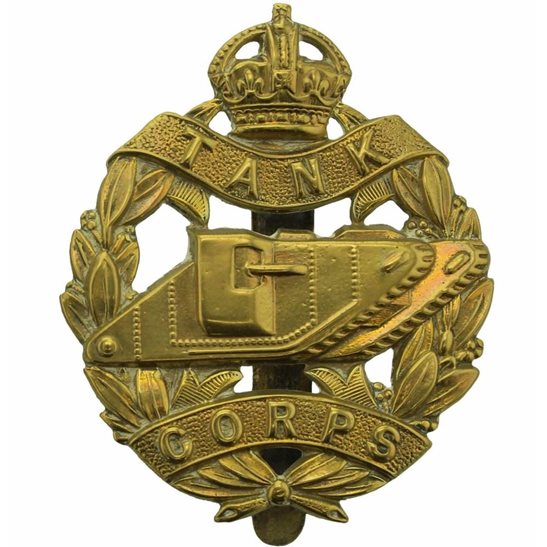Personal Details
Born: 16 March 1892 in Burleydam, Cheshire.
Family: He was the sixth of ten children born to Joseph Downing, a farmer, and his wife Sarah. He married Irene A Sharpe July 1921 in Whitchurch, Shropshire; no children can be traced for the marriage.
Residence: In 1901 he was living with his parents and siblings at Old Woodhouses, Whitchurch, Shropshire. In 1911 the family had moved to Elymas House, Wirswall, Cheshire. When he enlisted he was living at Brook Villa, Broughall, Whitchurch. In 1939 he had moved to 61 Kingsway, Manchester. At the time of his death he was living at 43 Irish Street, Whitehaven, Cumbria.
Employment: In 1911 he was assisting on the family farm and in 1939 he was a master dairyman.
Died: 26 April 1981, aged 89, in Whitehaven.
Military Details
Regiment: Royal Tanks Corps
Rank: Private
Service Number: 109702
Date of Enlistment: 3 December 1915
Date of Discharge: 23 March 1919
Reason for Discharge: Demobilisation
Harry was awarded the Campaign Medals (British war medal and Victory medal)

The British War Medal (also known as 'Squeak') was a silver or bronze medal awarded to officers and men of the British and Imperial Forces who either entered a theatre of war or entered service overseas between 5th August 1914 and 11th November 1918 inclusive. This was later extended to services in Russia, Siberia and some other areas in 1919 and 1920. Approximately 6.5 million British War Medals were issued. Approximately 6.4 million of these were the silver versions of this medal. Around 110,000 of a bronze version were issued mainly to Chinese, Maltese and Indian Labour Corps. The front (obv or obverse) of the medal depicts the head of George V. The recipient's service number, rank, name and unit was impressed on the rim.
The Allied Victory Medal (also known as 'Wilfred') was issued by each of the allies. It was decided that each of the allies should each issue their own bronze victory medal with a similar design, similar equivalent wording and identical ribbon. The British medal was designed by W. McMillan. The front depicts a winged classical figure representing victory. Approximately 5.7 million victory medals were issued. Interestingly, eligibility for this medal was more restrictive and not everyone who received the British War Medal ('Squeak') also received the Victory Medal ('Wilfred'). However, in general, all recipients of 'Wilfred' also received 'Squeak' and all recipients of The 1914 Star or The 1914/1915 Star (also known as 'Pip') also received both 'Squeak' and 'Wilfred'. The recipient's service number, rank, name and unit was impressed on the rim.

